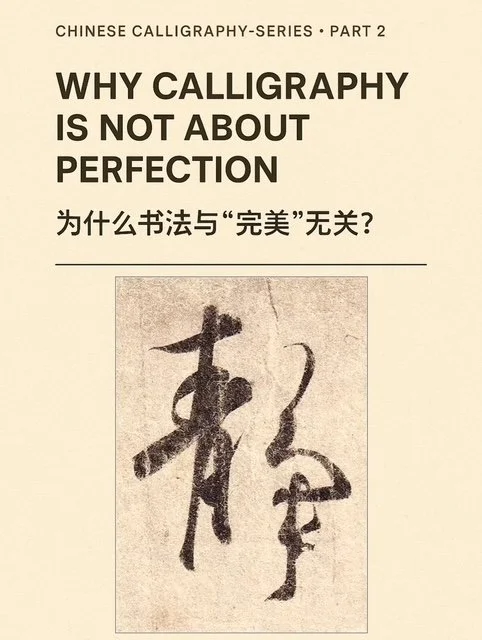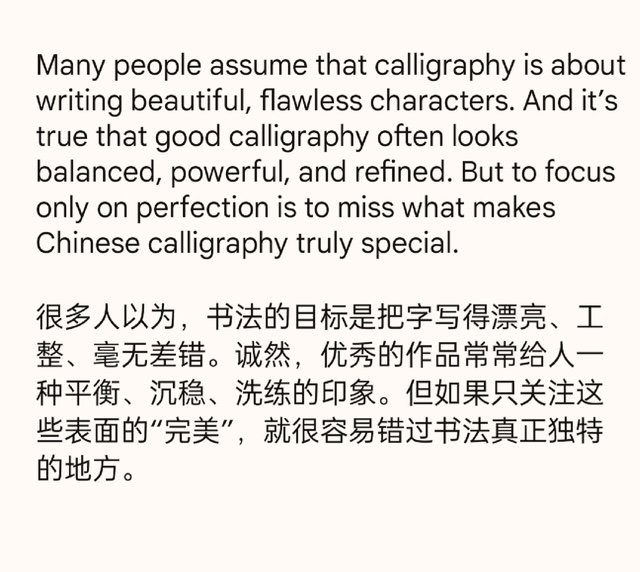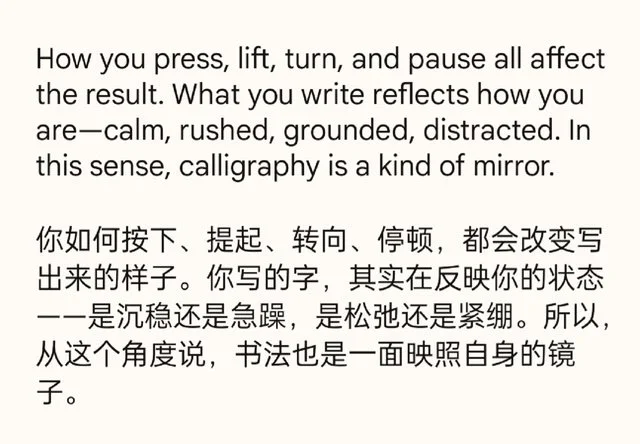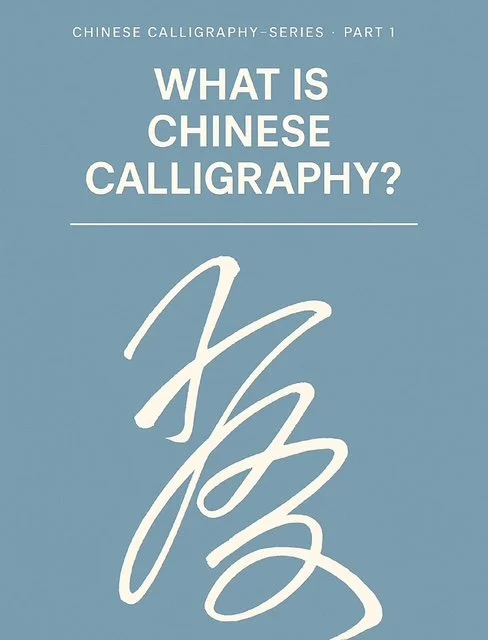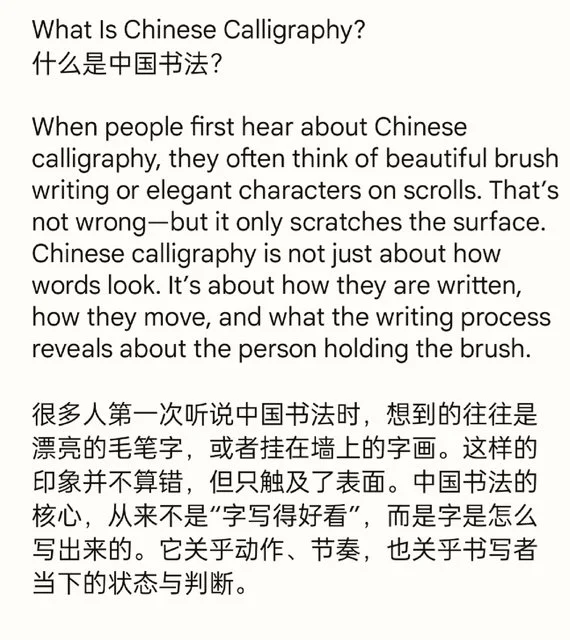Why Chinese Calligraphy Is Not About Perfection
Many people assume that calligraphy is about creating flawless characters—neat, balanced, elegant. While excellent calligraphy often carries a sense of order and grace, focusing solely on perfection risks missing what makes this art form so meaningful.
Calligraphy is not about getting every stroke just right. It’s about responding to the moment. The brush is soft. The ink flows. The paper absorbs everything. There are no do-overs. You can’t undo a stroke, and that’s the beauty of it. Every movement leaves a mark—and with it, a sense of presence and honesty.
This is why Chinese calligraphy is less like graphic design and more like dancing or jazz. You can prepare and practice, but when it’s time to write, you must respond intuitively. You don’t control the brush—you work with it. It’s not a blueprint. It’s a dialogue.
A stroke might wobble. The ink might skip. The hand might move slightly too fast or too slow. And yet, those so-called “imperfections” bring more life, more emotion, and more vitality to the work. What matters most in calligraphy is not flawlessness—it’s whether the writing feels alive.
Want to explore the freedom and rhythm of calligraphy? Join an upcoming virtual or in-person workshop with Jojo Liu at https://jojocalligraphy.com and experience how imperfection becomes art.
Why Chinese Calligraphy Still Matters in a Digital World
In a world dominated by keyboards and screens, the art of writing by hand is becoming increasingly rare. Yet in this fast-paced digital era, Chinese calligraphy offers something profound—a return to breath, to body, to mindfulness.
Each brushstroke becomes a reflection of the writer’s energy. Calm? Rushed? Distracted? It shows on the page. In this sense, calligraphy is not just visual—it’s emotional.
Calligraphy doesn’t just connect us to tradition—it reconnects us to ourselves. The physical act of holding a brush and shaping a character invites slowness, presence, and awareness.
You don’t need to be Chinese to feel the presence behind the brush. You don’t even need to understand the meaning of the characters. The movement, the intention, and the energy speak for themselves.
Want to experience this mindful and expressive art? Explore private sessions, virtual workshops, and live events with Jojo Liu at https://jojocalligraphy.com.
Learn from Anywhere: Zoom Chinese Calligraphy Lessons with Jojo Liu
If you've ever wanted to explore the calming, expressive art of Chinese calligraphy but couldn’t find a class nearby, there's good news—now you can join from anywhere with Zoom Chinese calligraphy lessons. These online sessions bring centuries of tradition straight to your screen, combining cultural depth with hands-on creative learning.
Through live Zoom instruction, students of all skill levels can explore the basics of brush technique, stroke order, traditional tools, and the deeper philosophy behind this meditative art. Each class offers real-time guidance and feedback, giving you the structure of an in-person workshop with the convenience of learning at home.
Whether you're in a bustling city or a quiet rural town, all you need is an internet connection, some basic materials, and a curiosity to learn. Lessons are perfect for beginners, hobbyists, students, and even teams looking for a cultural and creative activity.
My Zoom-based calligraphy lessons are taught with care, patience, and a passion for helping you discover the elegance behind each character. These sessions aren’t just about writing—they’re about slowing down, finding focus, and connecting with one of the world’s oldest living art forms.
👉 Interested in joining a class? Visit https://jojocalligraphy.com to explore current offerings and sign up for upcoming Zoom Chinese calligraphy lessons. Let’s connect through ink, brush, and tradition—wherever you are in the world.
The Deeper Meaning of Chinese Calligraphy: Art, Movement, and Mindfulness
When most people think of Chinese calligraphy, they imagine elegant characters brushed gracefully onto rice paper or silk scrolls. But while those visuals are striking, they only tell part of the story. Chinese calligraphy is not just about how a word “looks”—it’s about how a word “moves”, how it’s brought into being, and what that process reveals about the person holding the brush.
Unlike ordinary writing, which is concerned with clarity and communication, calligraphy is about presence. It’s about gesture, rhythm, and energy. Every press, lift, turn, and pause of the brush reveals something about the writer’s state of mind. Are they calm or rushed? Grounded or distracted? In this way, calligraphy becomes a mirror—showing not just what’s written, but “how” it’s written and “who” is behind the movement.
In Chinese tradition, this art form is often likened more to music than to printing. The same character, like a musical note, may be repeated—but never performed the same way twice.
You don’t need to understand Chinese characters to feel the energy behind calligraphy. The gesture, the breath, and the rhythm are universal.
Ready to explore this tradition for yourself? Join Jojo Liu’s upcoming calligraphy classes and events—both in person and online—at https://jojocalligraphy.com.

